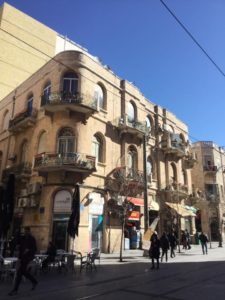Over winter break, I visited Israel for the third time in just over one year as part of a “Student Leadership Mission” sponsored by the Zionist Organization of America.
The organization is the oldest Zionist organization in the United States and currently has a membership of over 25,000 and chapters throughout the United States. Zionism is defined as a political movement supporting the creation, and protection, of a Jewish state.
I joined 39 other students, both Jewish and non-Jewish, from across the United States on the mission, which included visits to the Syrian border, the southern town of Sderot, Jerusalem, Hebron, and a Druze village.
It is amazing that a country roughly equal in size to New Jersey is home to so many diverse groups of people. One of the most memorable parts of the trip for me was visiting a leader in Israel’s Christian community, Father Gabriel Naddaf, who is a Greek Orthodox priest active in encouraging Israel’s Christian Arabs to join the Israeli Defense Force and more fully integrate themselves into Israeli society.
One of the major topics we focused on during the mission was understanding various security challenges facing Israel. We visited Israeli soldiers stationed on the Golan Heights, which has been the site of periodic attacks from groups in Syria including ISIS, and which overlooks much of northern Israel.
Prior to 1967, the Golan was used by the Syrian army as a base from which to launch artillery shells at farming communities in the Galilee. Tours were also given of the Jordan Valley, the site of Israel’s longest border with Jordan, and of the southern Gaza border region.
Visiting the south was certainly a little sobering for me. In Sderot, we visited a  kindergarten and played with two dozen or so children who were excited to receive toys we brought over from the U.S.
kindergarten and played with two dozen or so children who were excited to receive toys we brought over from the U.S.
Sadly, over 90% of children in Sderot exhibit PTSD symptoms as a result of the thousands of rockets fired indiscriminately at their town from militants in Gaza. Even playgrounds in the city were equipped with bomb shelters. I wish no child had to experience this sort of trauma. Children should be permitted to be children.
Throughout the trip, we also spent a significant amount of time inside Judea and Samaria, which has also been frequently called the West Bank since the area’s occupation by Jordan from 1948 to 1967.
What most surprised me about Judea and Samaria was the normalcy I found in the area. Everywhere I went, I saw thriving communities, both Arab and Jewish. Even in towns such as Hebron, which has what I feel is an undeserved reputation for violence, Arabs and Jews coexisted with one another. I even got to speak with Arab Palestinians who worked alongside Israeli Jews and told me that these kind of mixed jobs are highly sought after because of the higher payments offered.
Other Capital students have visited Israel in the past year through programs such as Birthright, and I hope more will visit soon.
Israel is so often misunderstood by Americans as being a land of only nonstop violence, but to be honest, I feel safer in Israeli cities such as Jerusalem and Tel Aviv than I do here in Columbus. Violence does happen there as it does everywhere, but it is often blown out of proportion. The best way to understand Israel is to visit and there are so many opportunities to travel there, even if you are not Jewish.

